No matter where you go, you’ll notice something peculiar about the trees — the fact that their bottoms are painted white. At first glance, it could look like vandalism. After all, why would anyone paint the trunks of the trees white? Yet, whitewashing is anything but that, as it is actually pretty important! And while it has been around for ages, people are still baffled by this strange yet interesting phenomenon.
Intrigued? Then you’ve come to the right place, as we’ll go in-depth to learn more about whitewashing and its usefulness.
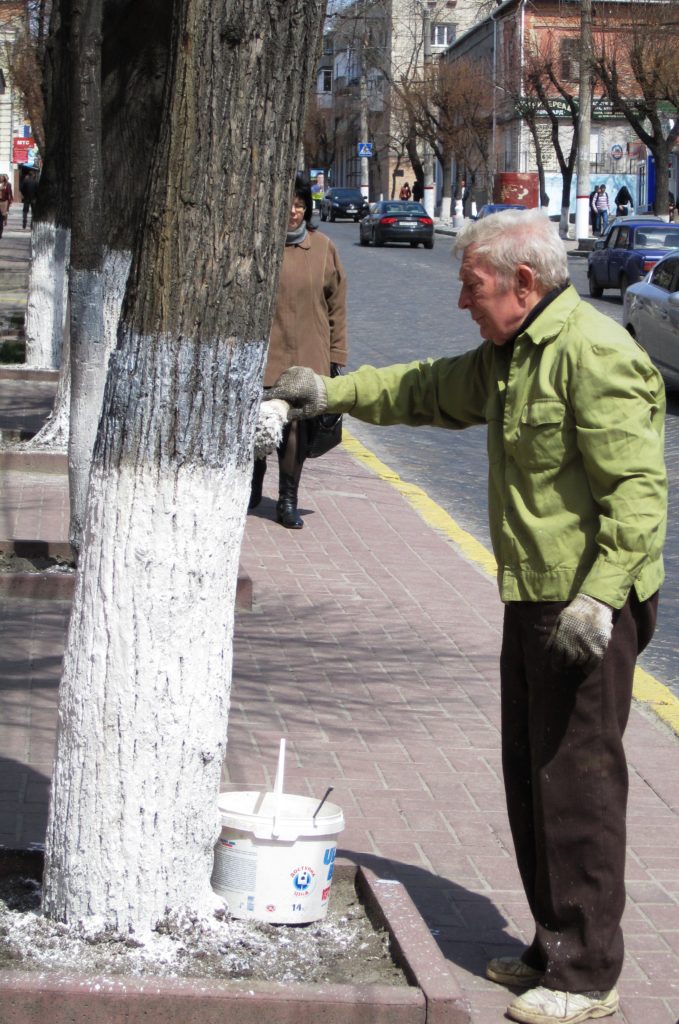
Sponsored Links
Why Is Whitewashing So Common?
Generally speaking, the purpose of whitewashing is to protect the tree from heat and insects. However, depending on the area, there are many other reasons for whitewashing the trees. Let’s check them out!
Press "Next" if you want to learn the answer!
Sun Scald
You might sometimes notice that some chunks of a tree’s bark buckle and look as if they are about to fall. In gardening terms, that process is called Winter Sun Scald or Southwest Injury and usually occurs during the tree’s infancy. But what causes this phenomenon? Simply put, Sun Scald happens in areas such as New Mexico, where there is intense sun exposure, and the temperatures fluctuate wildly between day and night.
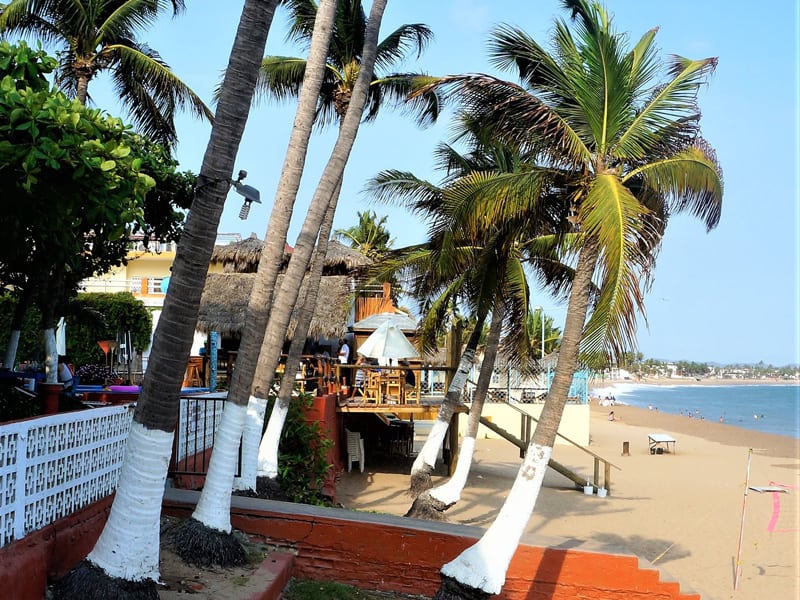
Fortunately, painting a tree’s trunk white is similar to adding sunscreen. In other words, once you whitewash your young trees, their trunks’ surfaces won’t get dry and cracked as easily anymore.
Heat Protection
Painting the base of a young tree will also help it remain cool in the spring. Why? Because white paint acts as a shield that reflects the heat and allows the tree to spend more time on transpiration and growing their fruits.
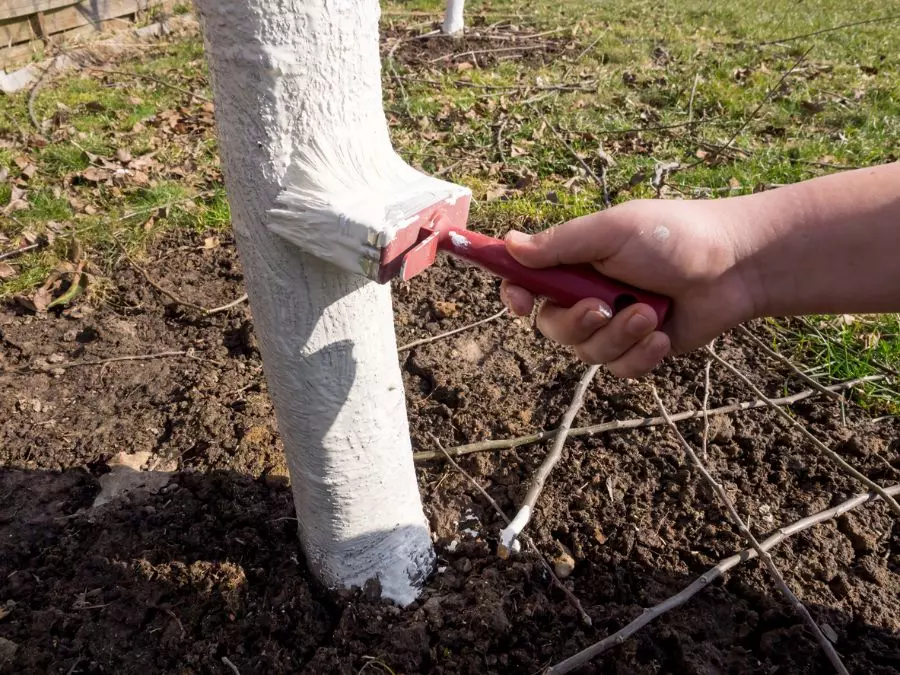
Additionally, when trees are cooler, they have less stress, which makes their stomata stay open a bit longer for the exchange of gases. That’s extremely important because the more carbon dioxide the trees take in, the more energy they create.
Pathogens and Pests
More often than not, a tree’s bark will crack, allowing insects to creep inside. Once that happens, fungi and bacteria will feed on the tree’s innards, stunting its growth and eventually killing it.
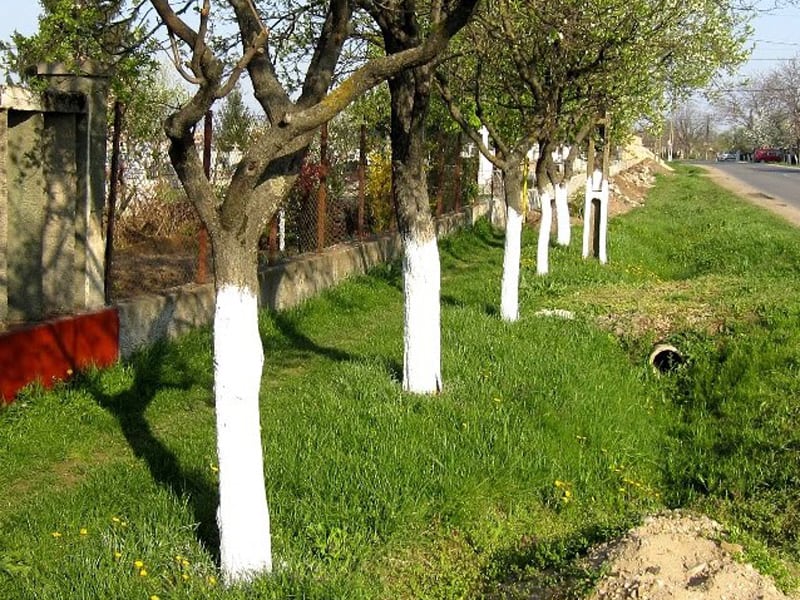
As a result, whitewashing mixtures contain three parts water and one part interior latex paint. The paint itself prevents insects from crawling up the tree and entering inside through the cracks.
Other whitewashing formulas use hydrated lime with water and salt or kaolin. As a matter of fact, people use kaolin to protect fruits from pests because it can be washed pretty easily before consumption.
Whitewashing in Mexico
As previously mentioned, people whitewash trees for a variety of reasons, depending on the area they live in. For example, in Mexico, the purpose of whitewashing is to protect the tree and fend off a specific type of ant.
Sponsored Links
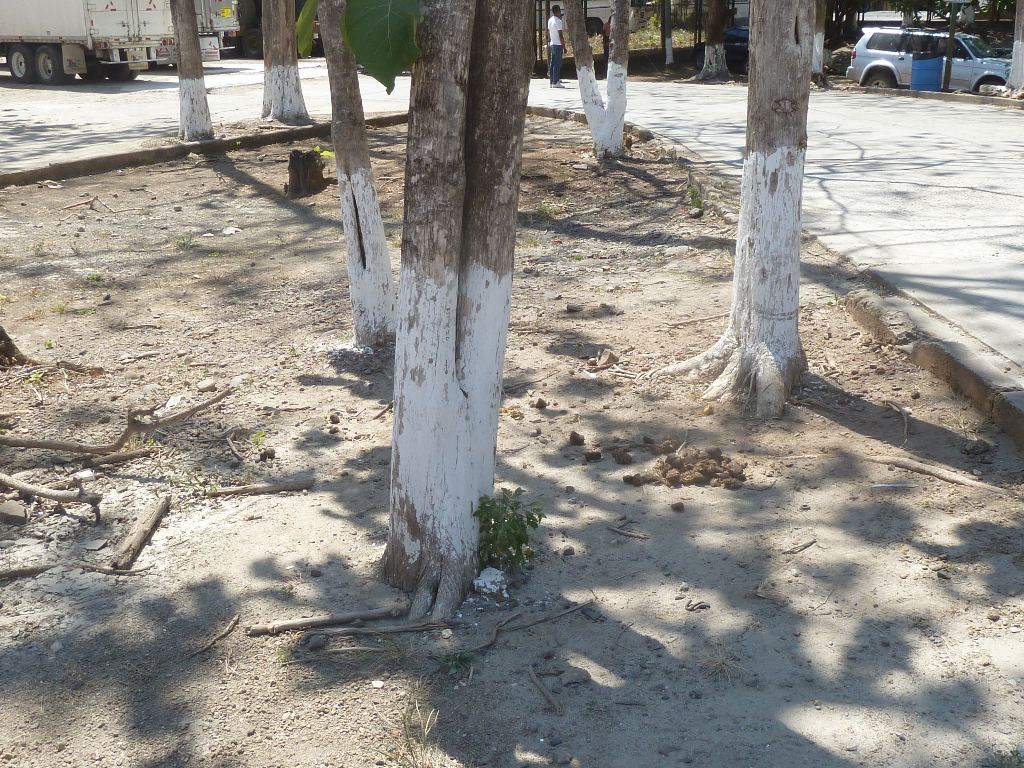
These extremely aggressive insects, called leafcutter ants, hunt and cut fresh vegetation, thus compromising flowers, leaves, and grass. They are so vicious that they are able to destroy the foliage of a citrus tree in less than a day. That’s why locals paint the tree trunks using calcium hydroxide, which is very alkaline and will burn any ant that gets near the tree.
Besides repealing ants, whitewashing also protects trees from Mexico’s extreme temperatures. As such, most of Mexico’s trees are healthy, and their bark has little to no cracks.
What About Greece?
Greece is another country where you can find trees with their trunks painted white. However, whitewashing is slowly becoming less common, as the Greeks switch to more ecological ways of fighting insects.
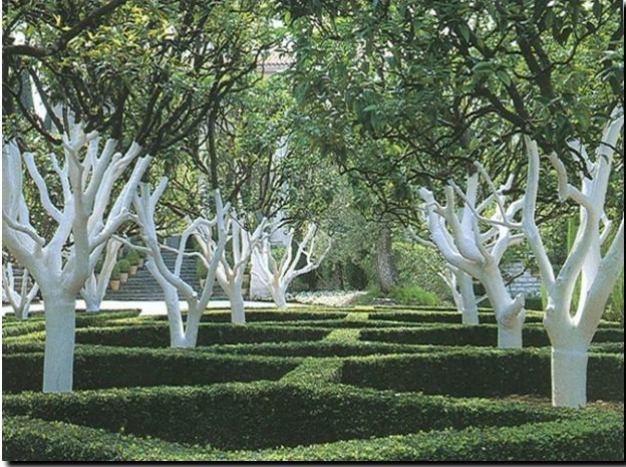
Even so, according to tradition, during Easter, everything gets whitewashed. That includes the house, the stone steps, fences, and, most importantly, the trees. So, make sure to plan your next trip to Greece accordingly — you won’t want to miss this interesting and unique tradition.
Press continue if you want to learn the answer!
Why Do People Paint the Trunks of Palm Trees White?
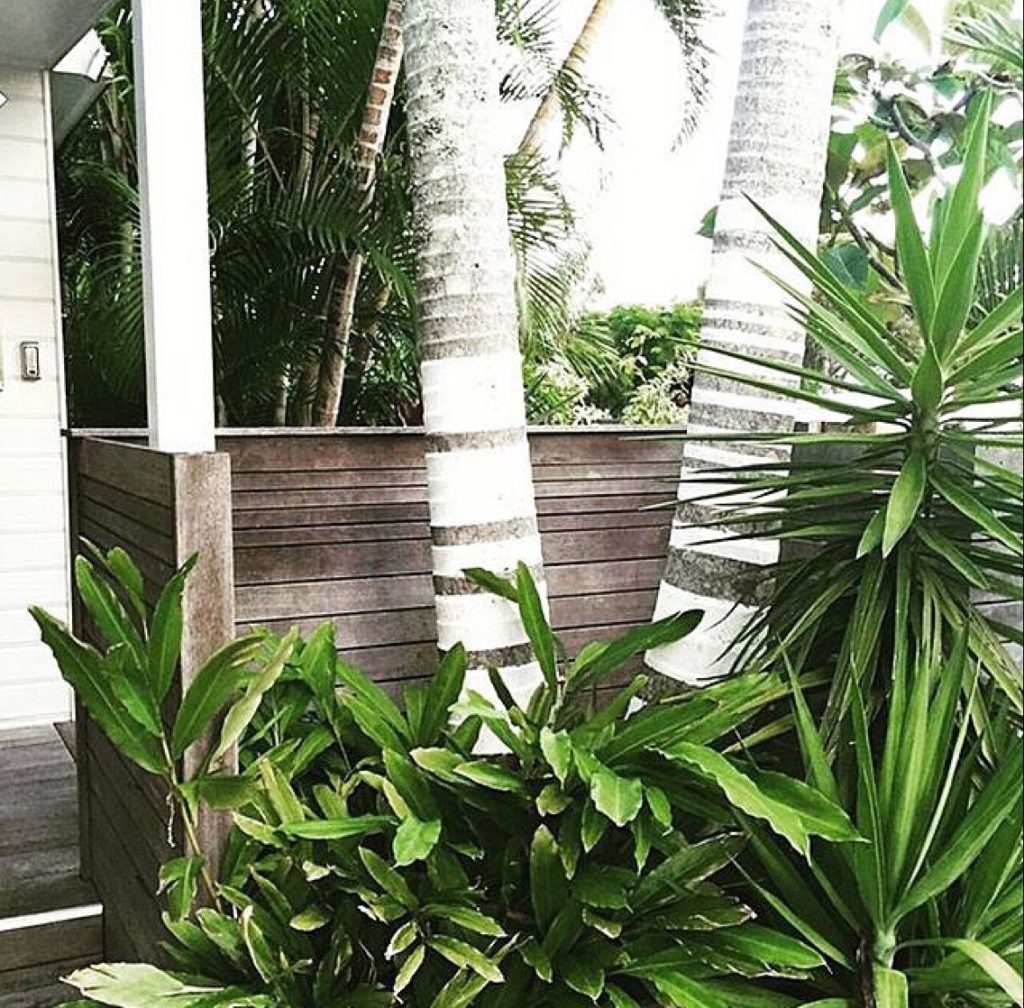
If you’ve been around the US, you’ve most likely come across palm trees that are painted white. And while protection from the sun and insects is the main purpose of whitewashing palm trees, there is also an additional and fascinating reason.
Fending Off Insects
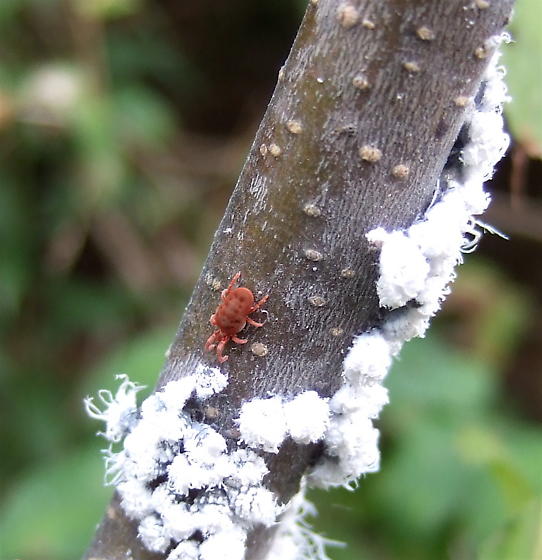
Like any other type of tree, palm trees are prone to pests. In fact, insects can infect and destroy coconuts, regardless of their hard and durable exterior. Therefore, people whitewash palm trees using latex paint and water. Sometimes, they even add oil or lime to the mixture in order to trap any insect that tries to climb and reach the coconuts.
Blocking the Sun
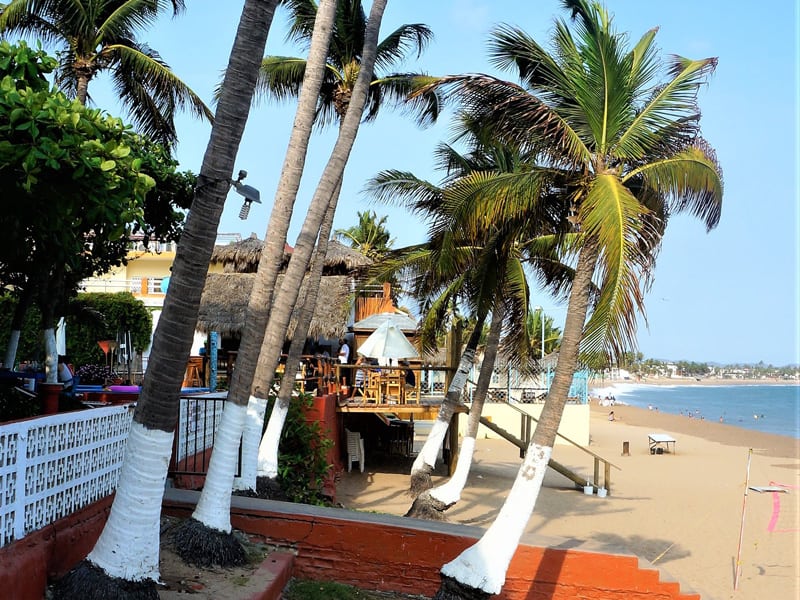
The sun’s UV rays are hazardous to palm trees as they burn their bark and damage the cambium layers. Eventually, due to dehydration, these palm trees will die. And while adult palm trees can protect themselves from UV rays, it takes about three years before they can fully develop their bark. Thus, whitewashing is used to offer enough protection until palm trees are mature and don’t need help anymore.
Improving Visibility
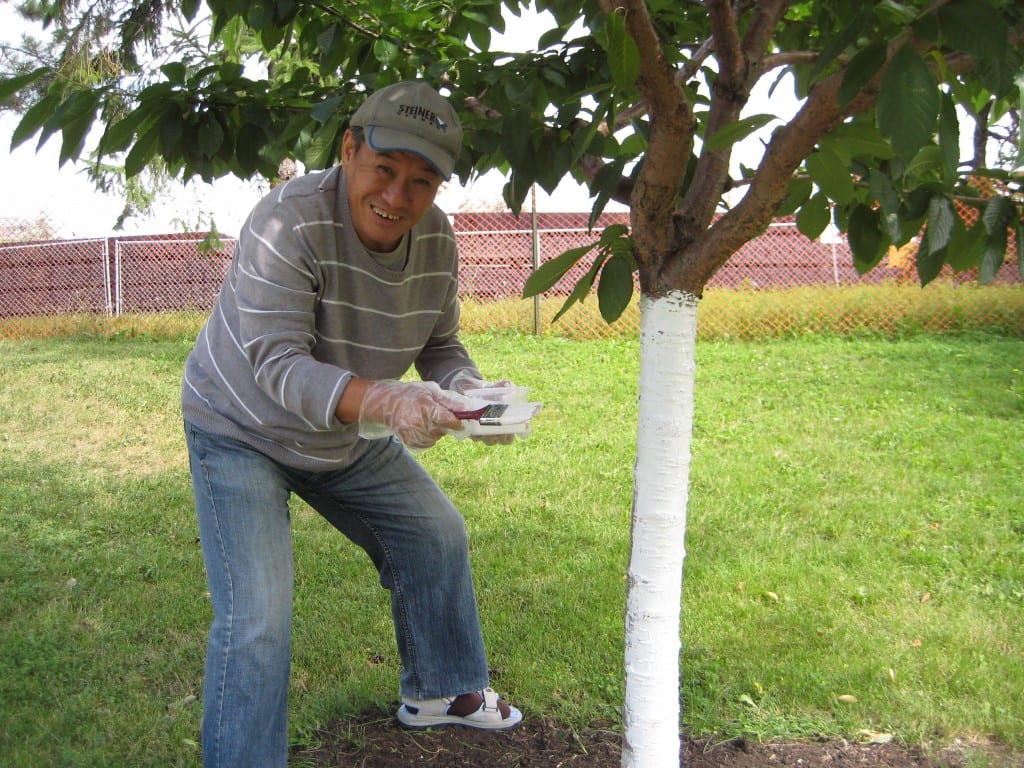
Last but not least, the bark of palm trees is painted white to make them more visible, specifically for those on the side of the road. Why is that important? Because accidents involving palm trees are extremely common, especially in California. And though painting palm trees won’t stop accidents, it will make them less frequent, as drivers can see them much more clearly, even during the night.
Final Thoughts
Overall, each part of the world has its own reasons for painting tree trunks white. However, most of them focus on protecting trees from the sun, weather, insects, or other pests. And even though there are other alternatives to prevent such problems, few are as effective and accessible as whitewashing.
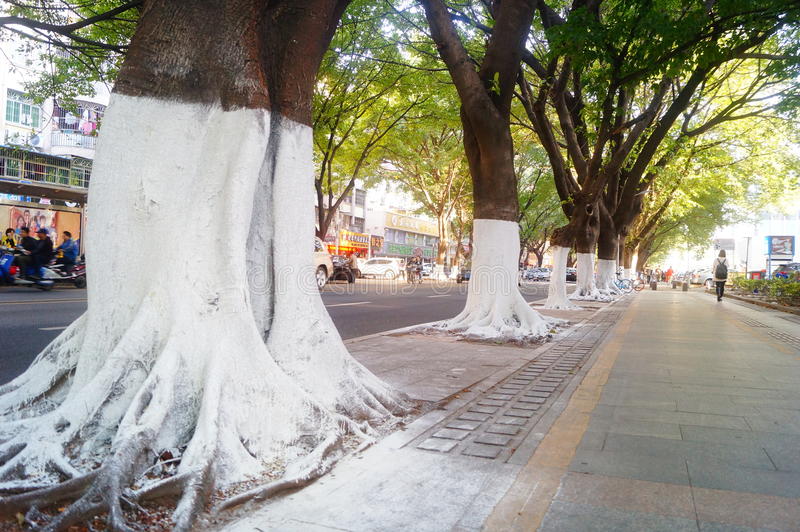
Sponsored Links
Therefore, if you have any young trees in your garden, you should consider whitewashing them regularly. Not only will you fend off insects, but you will give your trees enough protection for them to fully grow without the fear of Sun Scald. And best of all, whitewashing will prevent fungi, so you don’t have to worry about your trees becoming infested by mold.


